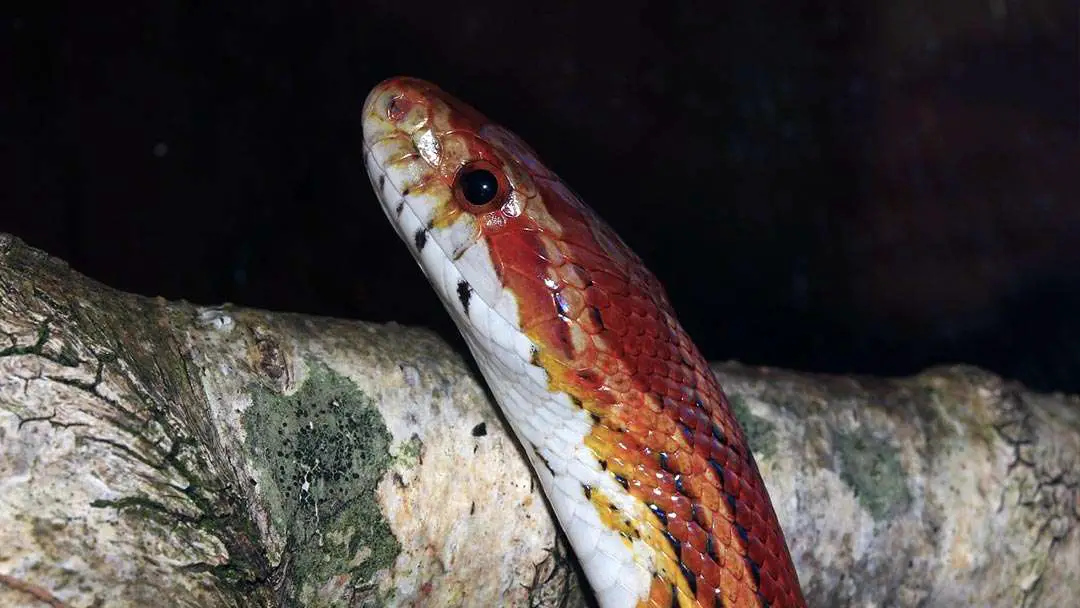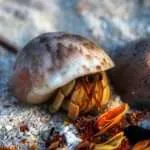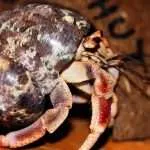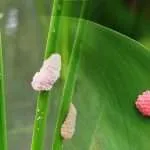You’re perhaps wondering, “What in the world is a Pet Corn Snake?” or maybe your reaction is “Yikes, snakes are a no-no for me as pets” or the first thing that comes to your mind is, “This should be interesting.”
Whatever category you fall into, I can assure you that this is a journey you’re going to enjoy – or maybe not – but you’ll like it.
Come on board. Meet Mr/Mrs. Corn Snake.
Found in southern New Jersey, Louisiana, parts of Kentucky and found mostly in Florida, the Corn Snake is a small, docile and harmless animal.
They are sometimes mistaken for Copperhead Snakes – which are venomous – and killed as a result of mistaken identity.
The Corn Snake, most likely, got its name from the pattern that designs its body – the skin pattern is corn-like. Also, it is found mostly in corn plantations.

You find the Corn Snake in places like wooded groves, rocky hillsides, meadowlands, woodlots, rocky open areas, tropical hammocks, barns, and abandoned buildings.
Similar to the Corn Snake is the King Snake – they are from the same class and are constrictors.
Just like your dogs and cats, Corn Snakes can be kept as a pet but it’s only for people who are interested in snakes or reptiles in general.
Below are things you need to know if you’re interested in knowing the Corn Snake or getting one as a pet.
Corn Snake Overview
| Scientific name: | Pantherophis guttatus |
| Class: | Reptilia |
| Genus: | Pantherophis |
| Family: | Colubridae |
| Order: | Squamata |
Description
The Corn Snake is a slender snake with a checkboard-like pattern and a corn-like skin. It is also a non-venomous reptile with shiny skin.
Corn Snake Morph
The Corn Snake comes in different colors/morphs variations. Usually, they have large patterns of red blotches.
Some of the colors of a Corn Snake including but not limited to: brown, brownish-yellow, albino (will take any color without having any dark brown or black pigmentation), light-yellow, orange-red, light-grey, dark-grey, pale-grey, bright-orange, and all-white color.
Some factors such as age, size, genetics, and geography determine the color, scale, and pattern that a Corn Snake will take.
Note that, the more unique morph of a Corn Snake determines the health problems the snake may develop.
Corn Snake Size
When a Corn Snake hatch, they are about 10 to 14 inches long (they can be very tiny when they hatch) while an adult size measures between 4 to 6 feet.
Corn Snake Lifespan
When left in the wild, the Corn Snake can live up to 5 to 10 years but in a captive state, its lifespan extends to 12 to 20 years.
The lifespan of a Corn Snake – when kept as a pet – is up to you as the owner. Your Corn Snake will live a long, full life if, and only if you give it proper care.
Now that you know its lifespan, you must know that they are going to be around for a long time.
Hence, you need to be committed to providing for your snake and taking care of all its needs.
Keeping a Corn Snake as Pet

When choosing a Corn Snake as a pet, you must adopt a healthy one.
Look out for the one with no cuts or abrasions, it should have bright and alert eyes, a flicking tongue and lookout for signs that it is active (the Corn Snake is very active).
Also, check out the scales to make sure it’s nice and clear.
To be on a safe side, you can take you Corn Snake to see a vet after adoption to know its health status.
Corn Snake Food
So you’re probably thinking what do I feed the Corn Snake with or do I let it loose to fend for itself.
Feeding the Corn Snake is not difficult because their primary meal is rodents. This doesn’t mean they don’t eat other things such as lizards.
The Corn Snake is a constrictor – it usually swallows its prey whole. First, it bites the prey before squeezing the life out of its prey.
This doesn’t mean your pet should be allowed to go out to feed, you can feed it dead rodents.
Although, you may want to give your snake the feeling of catching its prey by itself by dangling the prey in front of it to strike.
One thing to note is, don’t serve your Corn Snake a cold meal, this can kill the excitement of hunting for its meal.
You can get a dead rodent and make it warm before serving.
During its early years, you can feed your Corn Snake with lizards and tree frogs, as an adult, it should be fed rats, birds and bats.
Your Corn Snake pet typically doesn’t feed every day.
Another essential part of its meal is to provide clean water for drinking.
Corn Snake Humidity Requirement
Corn Snakes require about 50 to 60 percent humidity. Having fresh water in the tank also helps with the humidity.
Corn Snake Habitat (Enclosure)

Since you’ll be adopting the Corn Snake as a pet, there’ll be the need to build a habitat/enclosure for your pet.
The habitat you’ll be building is not one that will last the snake a lifetime. You’ll be required to build a tank for the snake as it grows from a youngster to adulthood.
But if you still insist on building a lifetime home for your Corn Snake, you’ll need a 30-40 gallon tank – for growth and movement.
Another way is to measure the length of the snake and build a tank a bit bigger than the length of the snake.
One thing is paramount when building a habitat for pets that live in enclosures – creating a habitat that looks exactly – almost exactly – like the natural environment it dwells in.
The following are the dos and don’ts of building a habitat for a Corn Snake:
The Do’s
Fill the tank with plants, branches, and boxes – the plants and branches for curling around on and the boxes for hiding.
Corn Snakes are shy and love to hide – snakes generally love to hide. As such, a hiding spot or a hiding box is necessary for the tank.
An easy way to do this is to use a plant pot or a cardboard box and turn it upside down.
You can put a hole in the top or by the side to serve as an entrance for the snake. The pot or box must be the size of the snake so it can be comfortable in it.
The tank must have a covering – a secured top – to prevent the snake from escaping captivity into the wild. To achieve this, you need a mesh lid that allows proper ventilation for the snake.
The temperature of the tank should be between 75 to 85 degrees Fahrenheit.
Snakes need heat to improve their immune and digestive systems. This can be achieved by setting a warming lamp over the tank.
The warning light should not be placed too close to the tank – the snake gets attracted by the light and too much exposure to the light will burn its skin.
The habitat should have a warm and cold area.
Substrates to use include aspen shavings, indoor-outdoor carpeting, newsprint or paper toweling.
The Don’ts
Do not use heat rocks because it can burn the skin of the snake – it has sensitive skin. Heat rocks do not disperse heat evenly. Your snake might sit on it and burn its skin.
Also, do not make use of reptile sand as bedding for the tank, when it gets into their nostrils, it leads to congestion.
Pine bedding is also not a good choice as the oils can be toxic. You can make use of newspaper or coconut fiber.
Building a habitat for a pet like the Corn Snake can seem difficult. To make things easy for you, I recommend you go to the pet store to give you directions on how to go about it.
Here is an article that may be of help.
Care for the Tank:
If you leave your Corn Snake in a dirty and messy tank, it will become ill. To avoid bacteria and fungus growing in the tank, you have to clean the tank regularly, remove feces and vomit on time.
Corn Snake Reproduction
Corn Snakes are oviparous – they lay eggs when reproducing. Breeding season for Corn Snakes takes place between March and May.
The female Corn Snake is ready to lay its eggs from late May to July.
When it’s ready to birth, the mother finds rotting stumps, piles of decaying vegetation or anything similar to lay her eggs, usually 10 to 30 eggs.
The location of birth is important for the eggs, they need a place with sufficient heat – about 82 degrees Fahrenheit – and humidity for incubation purposes.
The incubation period takes about 60 to 65 days before the babies begin to hatch. The hatching takes place between July and September.
The young hatchling’s length is between 10 to 15 inches and they reach the maturity stage in about a year and a half to three years (18-36 months).
The Corn Snake doesn’t grow super fast but they do get large.
Some Corn Snake Facts
- The Corn Snake most likely got its name from cornfields.
- The patterns on its body which look like corn and because it is found in cornfields.
- In case you don’t know, they are indigenes of North America.
- It is a beginner pet for lovers of snakes.
- The Corn Snakes are also known as the Red Rat Snake.
- Provided you are interested in snakes, the Corn Snake can be kept as a pet.
- They are harmless, non-venomous and this makes them great as pets.
- By nature, they are diurnal i.e they are active during the day and sleep at night. Some snakes are nocturnal – sleeping during the day and very active at night.
- Both mother and father – do not show parental care to their young. Once a Corn Snake hatch, it must begin to fend for itself to survive.
- Of course, the Corn Snake does bites, yep. It’s an animal remember and it will act like one, but they are still and harmless.
- Corn Snakes are often mistaken as a venomous snake and suffer from mistaken identity and – like the Copperhead – and killed as a result.
I hope you enjoyed your time with the Corn Snake.
Your local pet store or your vet will answer any more question(s) that I missed to mention and guide you on how to adopt and care for your Corn Snake.






